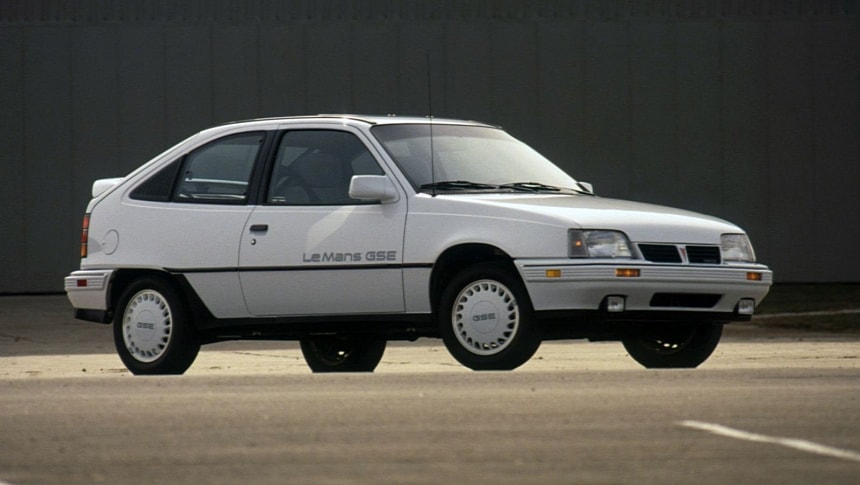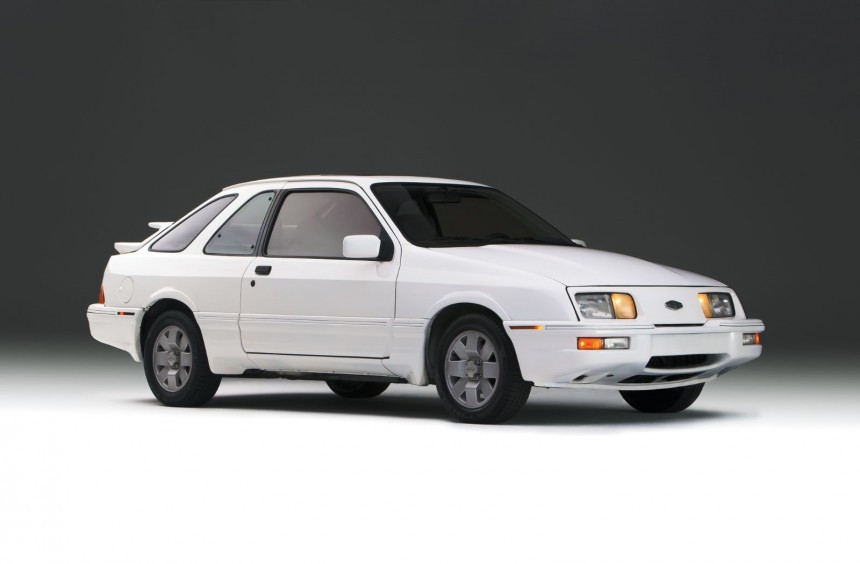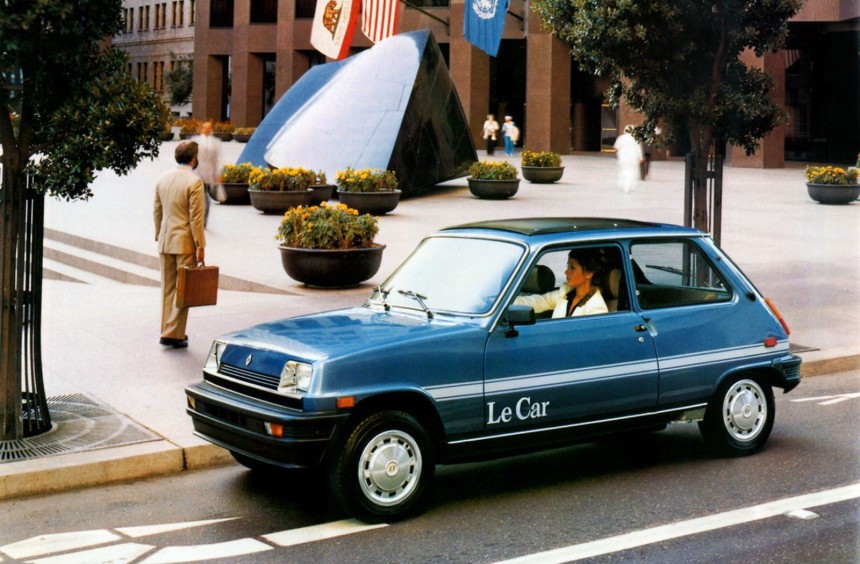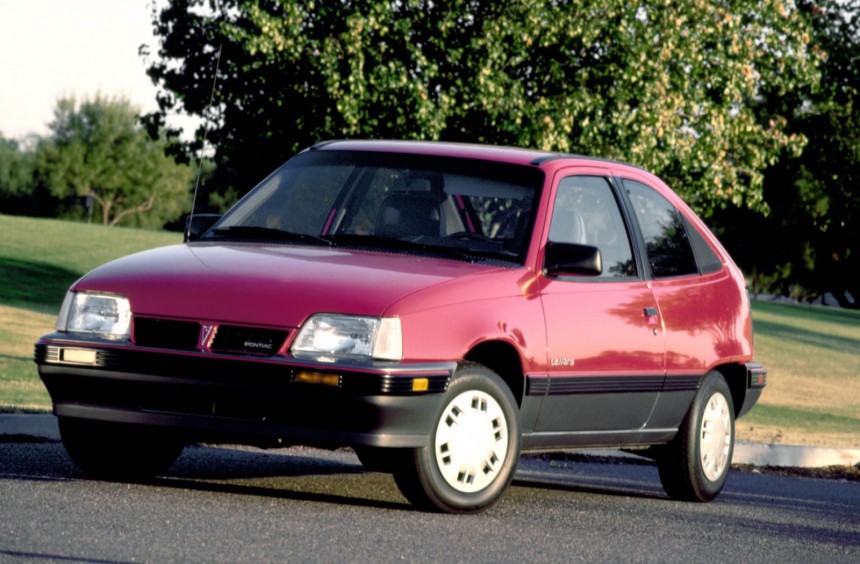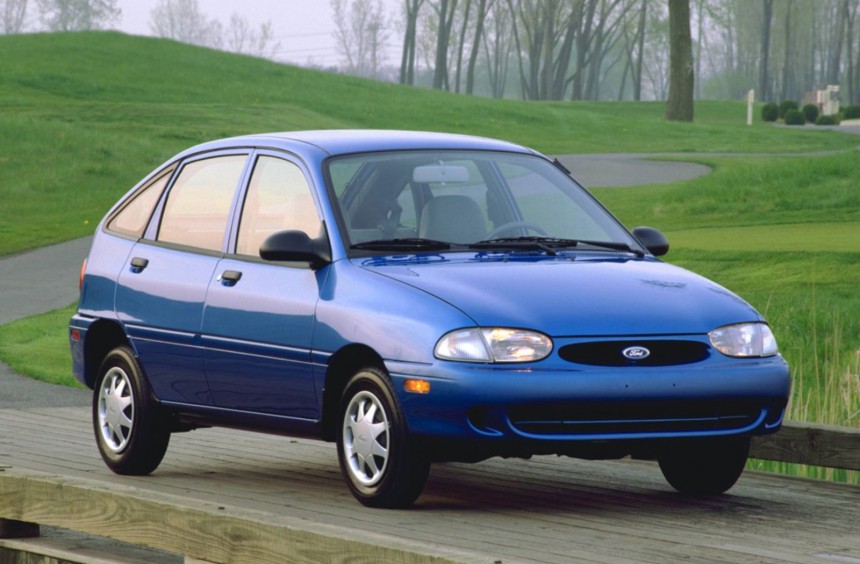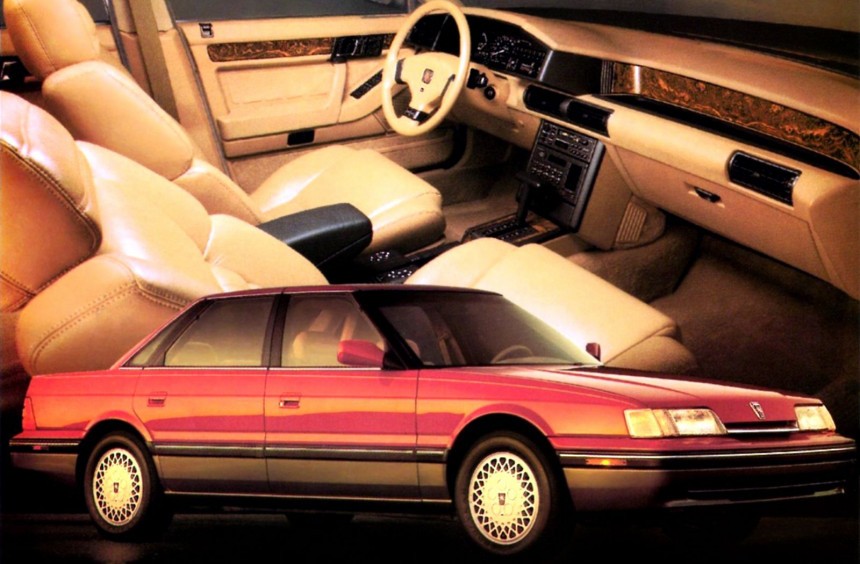While there's a long list of legendary imports that were very successful in the US, in this article, we'll remember the worst.
The first automobile was not conceived in the US, but that's the place where it thrived during the early days.
Naturally, local manufacturers were preferred by the car-buying public, so for decades, no foreign brand could dream of challenging Detroit's supremacy.
Slowly but surely, that started to change from the 1970s onwards, and imports crept their way into the US market.
Over the last five decades, many imports have succeeded in the US thanks to their price, revolutionary design, reliability, or combining all the aforementioned qualities.
However, some models failed spectacularly, and below, we have selected five of the worst cars ever imported into the US.
Remember Edsel, the Ford brand that existed for only two years? Well, we don't blame you if you don't.
In 1983, FoMoCo had a similarly bad idea and launched a new Lincoln-Mercury division called Merkur (Mercury in German). It lasted six years and offered two rebadged, German-built Ford Europe models on US shores.
As stupid as that sounds, the first Merkur model was actually an interesting car.
A sporty three-door hatchback marketed in Europe as the Ford Sierra XR4i, the US-spec XR4Ti launched in 1985 kept many of its Euro features, like the RWD layout, fully independent suspension system, upscale-ish interior, and a host of aggressive body upgrades.
Under the hood, the Ford XR4i hid by a 148-hp naturally-aspirated V6, while the Merkur XR4Ti received a US emission-compliant turbocharged Lima four-pot rated at 175 hp in manual cars and 145 hp in those that featured an automatic.
Though it was lighter and more powerful, the inline-four's superiority was canceled out by the nearly 280 pounds (127 kg) of extra chassis modifications required to meet US safety requirements, so the XR4Ti wasn't all that sporty, especially when equipped with an automatic.
To make matters worse, the styling didn't really appeal to American buyers, and the $16,503 ($47,303 in 2024 money) starting price wasn't too attractive either, so the model failed to live up to the sales expectations and Lincoln-Mercury discontinued it in 1986.
Back home in France and throughout the most important European markets, the Renault 5 became a sales sensation shortly after it was introduced in 1972.
A small, budget-friendly econocar, available in either two- or five-door body styles and several iterations of a reliable inline-four, it was the perfect people mover.
It even became one of the most iconic hot hatches of all time in 1980, when Renault introduced the R5 Turbo, a Euro-only homologation special that ditched the standard front-mounted engine for a mid-engine, rear-wheel-drive layout.
In 1976, the French carmaker d Turbo decided to import the standard R5 into the US, hoping it would fare well in the fuel crisis-plagued market.
Sales were disappointing, and the R5 didn't come close to overseas rivals like the Honda Civic or VW Rabbit (aka Golf), so Renault thought that the solution was a major rebrand, and in 1977, it renamed the US version Le Car.
As you can imagine, that didn't help, and neither did the model's dominance in the Sports Car Club of America (SCCA) Showroom Stock Class C class.
Though it became Europe's best-selling model, the US Le Car became "Le Failure," and it was finally discontinued in the spring of 1983.
When most enthusiasts hear "Pontiac LeMans," the first thing they think about is the GTO, a muscle car icon based on the second and third-generation models.
However, nearly two decades later, the sixth-gen LeMans was no longer the base for a muscle car but an atrocious captive import.
Well past the days of building excitement, Pontiac thought it would be a good idea to revive the LeMans nameplate for the 1988 model year by importing a rebadged Daewoo LeMans, a South Korean GM car which, in turn, was based on the European Opel Kadett E launched in 1984.
Available as a two-door hatchback (called Aerocoupe) or a four-door sedan, the FWD compact powered by an anemic inline-four had only things like four wheels or a steering wheel in common with the Pontiac LeMans or the 1960s and 1970s.
A sportier GSE version was also introduced to make the painfully boring model line more exciting, but since it cost more than a Civic Si and was inferior in about every way conceivable, it just added insult to injury.
Finally, in 1993, Pontiac ended five years of pain and no gain by discontinuing the South Korean LeMans. Nevertheless, the GM division reused the captive import recipe in the following decades, a decision that ultimately led to its demise.
During the 1990s, Ford had a close partnership with South Korean manufacturer Kia. This collaboration led to a mildly interesting Ford Probe, but also the atrocious-looking Aspire.
Built in South Korea, the rebadged Kia Avella started life as the second-generation Ford Festiva in 1993, but one year later, it was rebranded Aspire.
A small hatchback available with either two or four doors, the Aspire was powered by a small Mazda inline-four that made it nearly as slow as a lawnmower.
As you can see above, it looked terrible and was everything but fun to drive, yet it was the first subcompact in the US to come standard with dual airbags and offer optional anti-lock brakes.
Ford had high hopes for the Aspire and even went as far as offering a facelift in 1997, but sales were awful from the start and never improved, so by the end of that model year, the model was discontinued.
Arguably the worst import ever sold in the US, the Sterling 825 was the product of the British Rover Group's attempt to revive its American side of the business.
Founded in 1987, the US-only Sterling Cars division introduced the upscale four-door sedan that year, hoping to hit the jackpot, it failed spectacularly.
Built in the UK, the Honda V6-powered Sterling 825 was a rebadged Rover 800, which, in turn, was based on the Honda/Acura Legend since the English and Japanese companies were in close collaboration on several fronts.
But while the Legend was praised for its reliability and build quality, its more upscale Sterling sibling exasperated its owners with a never-ending list of built-quality issues.
As a result, even if it got off to a promising start during its debut year, Sterling Cars couldn't come close to Acura in terms of sales from 1988 onwards, and even after attempting to solve the model's numerous issues, crickets could often be heard inside the brand's dealerships.
Ultimately, the 825, its subsequent 827 hatchback sibling, and the Sterling brand itself were discontinued in 1991.
Naturally, local manufacturers were preferred by the car-buying public, so for decades, no foreign brand could dream of challenging Detroit's supremacy.
Slowly but surely, that started to change from the 1970s onwards, and imports crept their way into the US market.
Over the last five decades, many imports have succeeded in the US thanks to their price, revolutionary design, reliability, or combining all the aforementioned qualities.
However, some models failed spectacularly, and below, we have selected five of the worst cars ever imported into the US.
Merkur XR4Ti
In 1983, FoMoCo had a similarly bad idea and launched a new Lincoln-Mercury division called Merkur (Mercury in German). It lasted six years and offered two rebadged, German-built Ford Europe models on US shores.
As stupid as that sounds, the first Merkur model was actually an interesting car.
A sporty three-door hatchback marketed in Europe as the Ford Sierra XR4i, the US-spec XR4Ti launched in 1985 kept many of its Euro features, like the RWD layout, fully independent suspension system, upscale-ish interior, and a host of aggressive body upgrades.
Under the hood, the Ford XR4i hid by a 148-hp naturally-aspirated V6, while the Merkur XR4Ti received a US emission-compliant turbocharged Lima four-pot rated at 175 hp in manual cars and 145 hp in those that featured an automatic.
Though it was lighter and more powerful, the inline-four's superiority was canceled out by the nearly 280 pounds (127 kg) of extra chassis modifications required to meet US safety requirements, so the XR4Ti wasn't all that sporty, especially when equipped with an automatic.
To make matters worse, the styling didn't really appeal to American buyers, and the $16,503 ($47,303 in 2024 money) starting price wasn't too attractive either, so the model failed to live up to the sales expectations and Lincoln-Mercury discontinued it in 1986.
Renault Le Car
A small, budget-friendly econocar, available in either two- or five-door body styles and several iterations of a reliable inline-four, it was the perfect people mover.
It even became one of the most iconic hot hatches of all time in 1980, when Renault introduced the R5 Turbo, a Euro-only homologation special that ditched the standard front-mounted engine for a mid-engine, rear-wheel-drive layout.
In 1976, the French carmaker d Turbo decided to import the standard R5 into the US, hoping it would fare well in the fuel crisis-plagued market.
Sales were disappointing, and the R5 didn't come close to overseas rivals like the Honda Civic or VW Rabbit (aka Golf), so Renault thought that the solution was a major rebrand, and in 1977, it renamed the US version Le Car.
As you can imagine, that didn't help, and neither did the model's dominance in the Sports Car Club of America (SCCA) Showroom Stock Class C class.
Though it became Europe's best-selling model, the US Le Car became "Le Failure," and it was finally discontinued in the spring of 1983.
Pontiac LeMans (6th Gen)
However, nearly two decades later, the sixth-gen LeMans was no longer the base for a muscle car but an atrocious captive import.
Well past the days of building excitement, Pontiac thought it would be a good idea to revive the LeMans nameplate for the 1988 model year by importing a rebadged Daewoo LeMans, a South Korean GM car which, in turn, was based on the European Opel Kadett E launched in 1984.
Available as a two-door hatchback (called Aerocoupe) or a four-door sedan, the FWD compact powered by an anemic inline-four had only things like four wheels or a steering wheel in common with the Pontiac LeMans or the 1960s and 1970s.
A sportier GSE version was also introduced to make the painfully boring model line more exciting, but since it cost more than a Civic Si and was inferior in about every way conceivable, it just added insult to injury.
Finally, in 1993, Pontiac ended five years of pain and no gain by discontinuing the South Korean LeMans. Nevertheless, the GM division reused the captive import recipe in the following decades, a decision that ultimately led to its demise.
Ford Aspire
Built in South Korea, the rebadged Kia Avella started life as the second-generation Ford Festiva in 1993, but one year later, it was rebranded Aspire.
A small hatchback available with either two or four doors, the Aspire was powered by a small Mazda inline-four that made it nearly as slow as a lawnmower.
As you can see above, it looked terrible and was everything but fun to drive, yet it was the first subcompact in the US to come standard with dual airbags and offer optional anti-lock brakes.
Ford had high hopes for the Aspire and even went as far as offering a facelift in 1997, but sales were awful from the start and never improved, so by the end of that model year, the model was discontinued.
Sterling 825
Founded in 1987, the US-only Sterling Cars division introduced the upscale four-door sedan that year, hoping to hit the jackpot, it failed spectacularly.
Built in the UK, the Honda V6-powered Sterling 825 was a rebadged Rover 800, which, in turn, was based on the Honda/Acura Legend since the English and Japanese companies were in close collaboration on several fronts.
But while the Legend was praised for its reliability and build quality, its more upscale Sterling sibling exasperated its owners with a never-ending list of built-quality issues.
As a result, even if it got off to a promising start during its debut year, Sterling Cars couldn't come close to Acura in terms of sales from 1988 onwards, and even after attempting to solve the model's numerous issues, crickets could often be heard inside the brand's dealerships.
Ultimately, the 825, its subsequent 827 hatchback sibling, and the Sterling brand itself were discontinued in 1991.
